© 2016-2017 Patrick Hassel Zein
![]()
This page was last updated 24.5.2017

© 2016-2017 Patrick Hassel Zein
![]()
This page was last updated 24.5.2017

During 2014-2016 I've sewn, crocheted, knitted and woven all parts of a folkloric costume from Kokkola (Karleby in Swedish) in Central Ostrobothnia, Finland. The only items that I haven't made by myself are the shoes, hat, belt, clock and glasses. Brage Dräktbyrå in Helsinki has provided me with sewing patterns and assistance in my work. Brage has posted descriptions (in Swedish) of the Kokkola costume here.
During my work, I wrote patterns and instructions for all crocheted, knitted and woven accessories. The resulting e-book (in English) is available on ravelry.com
The map below inticates reference points and places that I'm referring to in the text. It's good to notice that Central Ostrobothnia and Ostrobothnia are two different regions.

Below is a sketch from 1955 showing most parts and some details of the costume. I'm referring to the letters in this illustration in my descriptions below.
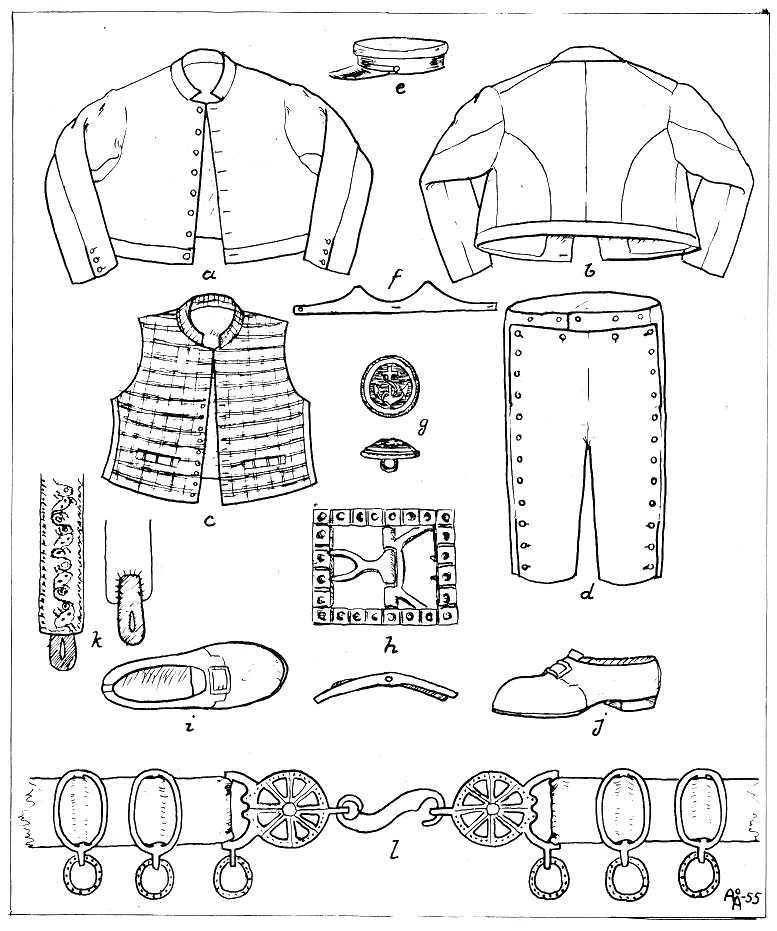
I've used Swedish shirt linen to sew shirts and collars, and to line the suspenders. Trousers and jacket are sewn in a rather thick wool. The vest is sewn in a handwoven half wool. Trousers, vest, jacket and tobacco pouch are lined with a slightly coarser unbleached linen. All crocheted, knitted and woven accessories are made in German sock yarn (like ONline Linie 3 Supersocke 100).
I get a feeling that the number of buttons in this costume is a signal of status. There is a total of 55 brass buttons ("poor man's gold") in the trousers, vest and jacket! The costume also has several pockets, which I also think can be seen as a marking of status. For some Swedish folkloric costumes the rule is to remove or replace colourful accessories and items in precious metals when you are in mourning, but this doesn't seem to be the rule in Kokkola, where it rather seems to have been important to show that you had some money. However, these are all my personal speculations.
The picture below shows Ostrobothnian regiment uniforms from 1705. Please note the socks, sock garters and shoes!
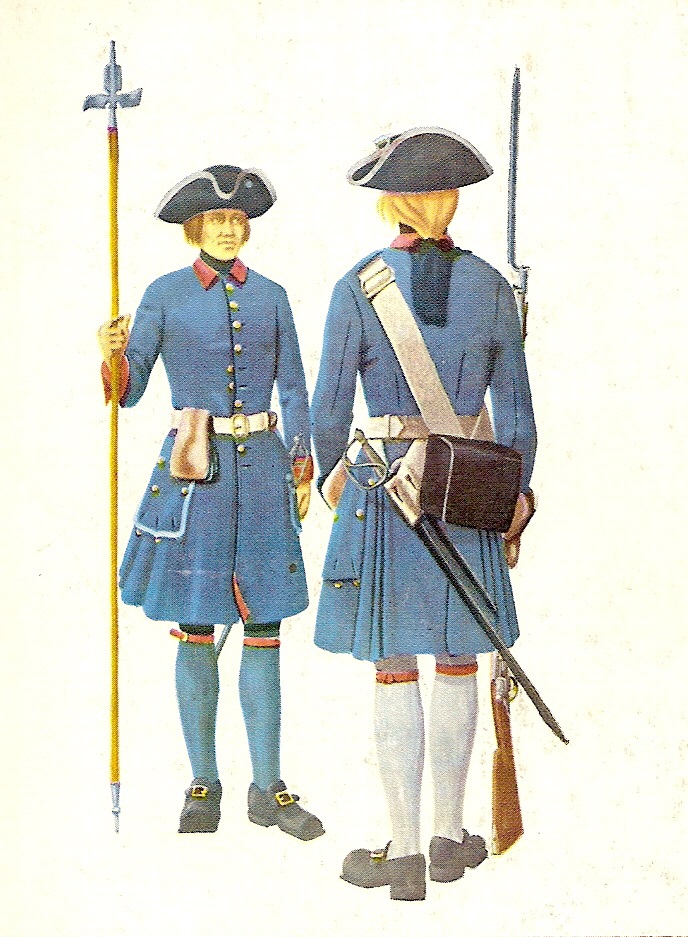
Blue was a popular colour in Finnish men's costumes - after inspiration from the uniforms of Swedish soldiers. I have noted that many other persons have sewn the button holes in costumes like this with blue thread. Rich men may have had blue thread in the button holes, but the common man had unbleached linen thread. I've chosen to sew all parts of the trousers, vest and jacket with unbleached linen thread strengthened with beeswax.
Aniline colours were invented around 1850, so the strong colours assumedly came into use during late 19th century. Tapestry crochet also became fashionable during late 19th century. This means that this entire costume can be dated to late 19th century.
The shirts in most Nordic men's costumes are fairly similar, so I dared use my Icelandic shirts with this costume. The loose collar is buttoned over the narrow banded collar of the shirt, and both the narrow collar and the gap between the collars are hidden by the scarf. The shirt for this costume should have a bit of creasing over the shoulders and a breast pocket.
The scarf is rolled up to a narrow pipe and placed twice around the neck. I have a blue scarf and a red one with a flower pattern. The red scarf looks nice when I'm wearing the red socks and not using the jacket, but with the white socks and the jacket on I think that the blue one is nicer. I've heard that on the Åland islands one can wear a black silk scarf when in mourning, but I don't know about the traditions around this in Kokkola.
The socks reach up above the knees. Red socks were used on weekdays, while white socks were used on special occasions such as weddings and funerals. I've knitted a pair in each colour on 2 mm needles.
In western Finland knee-breeches were commonly used during the time from which the folkloric costumes originate. During the same time period, the men's costumes were most colourful. The trousers have a broad lid and anchor buttons all the way from the waist down to the knees. There is decorative stitching along all seams around the waist and along the sides of the legs. I have added lining in unbleached linen along the sides of the legs (behind buttons and button holes), and also behind the waist line. I've also added two pockets in the same kind of linen.

Suspenders came into common use during the middle 19th century. These suspenders are extra beautiful, it took me 150 hours to crochet them on a 1 mm hook, so they are probably a slight marking of status. This was without comparison the most time-consuming part of my costume, but unfortunately the suspenders are at most occasions hidden under the vest. The same pattern was used in the neighbouring cities Kokkola, Öja and Kronoby. Most people believe that there are two roses on the horizontal band over the chest, but I'm wondering if those aren't Arctic brambles (Rubus Arcticus). Birds of an unknown species can be seen on the long bands over the shoulders. The suspenders shown in the sketch are decorated with a pattern that can be seen in Korsnäs sweater. Korsnäs is located further south in Ostrobothnia. The sketch also shows the leather straps with button holes that are hidden behind the large red tassels.
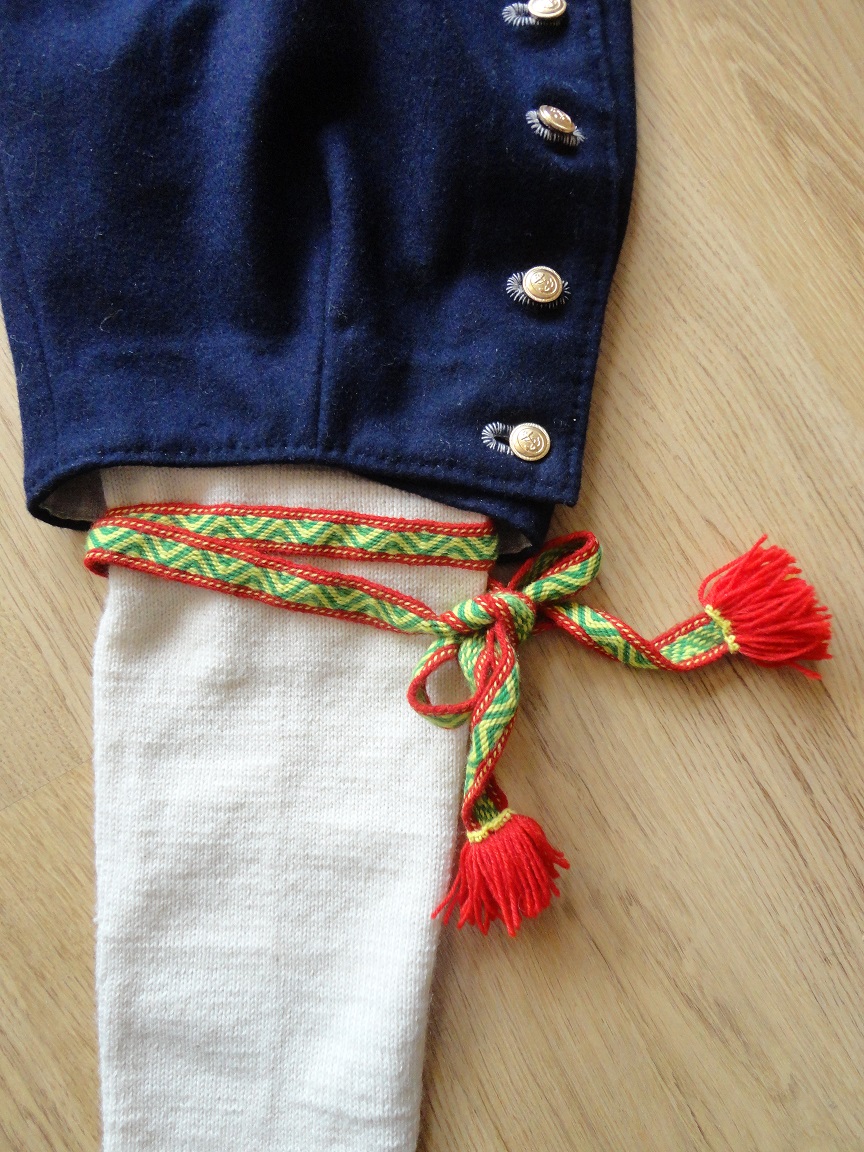
The garters are supposed to be woven on a band loom in red, green and yellow. I have cheated a bit, and made tablet woven my garters. The garters are tied with bows around the socks, below the knees. The zigzag pattern is from Nedervetil, which is close to Kokkola. This can possibly be regarded as a feminine pattern. I've heard that on the Åland islands one can wear a purple sock garters when in mourning, but I don't know about the traditions around this in Kokkola.
The rich man had half-wool on the back side as well, or a silk vest. The common man had linen on the back side. The back side of the vest has only got lining in the upper part. There is decorative stitching along all seams. There are two pockets in the vest. The collar of the vest is slightly higher than the jacket's collar. The red tassels of the suspenders must always be visible under the vest. It is quite OK if the shirt and the suspenders can be seen under the vest. The suspenders deserve to be seen!
You may notice that the back side of the jacket is cut in a way very similar to a tailcoat. The jacket is supposed to have a tight cut, but it is most often worn unbuttoned. There is decorative stitching along all seams (except over the shoulders). The entire jacket is lined with unbleached linen. There are two pockets in the jacket.
The same shoe buckles are used in many other folkloric costumes from Central Ostrobothnia.
The hat should ideally have a black skin brim, but my hat is made entirely in wool.
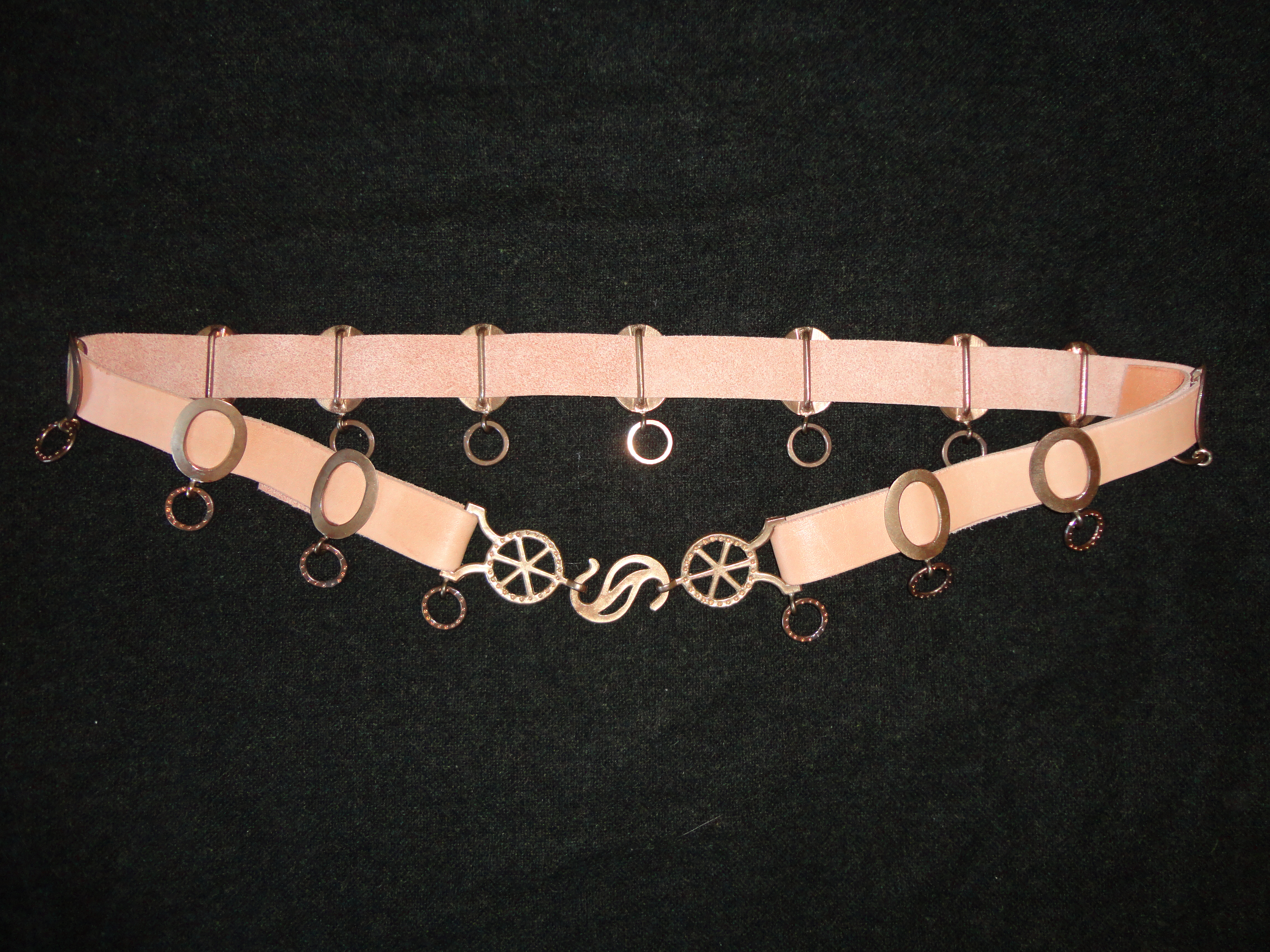
This belt is not used to hold up the trousers, but for carrying things such as a knife or a pouch. The rich man has more buckles. I've got 13 rings plus the belt buckle clasps, which counts as a rather low number.
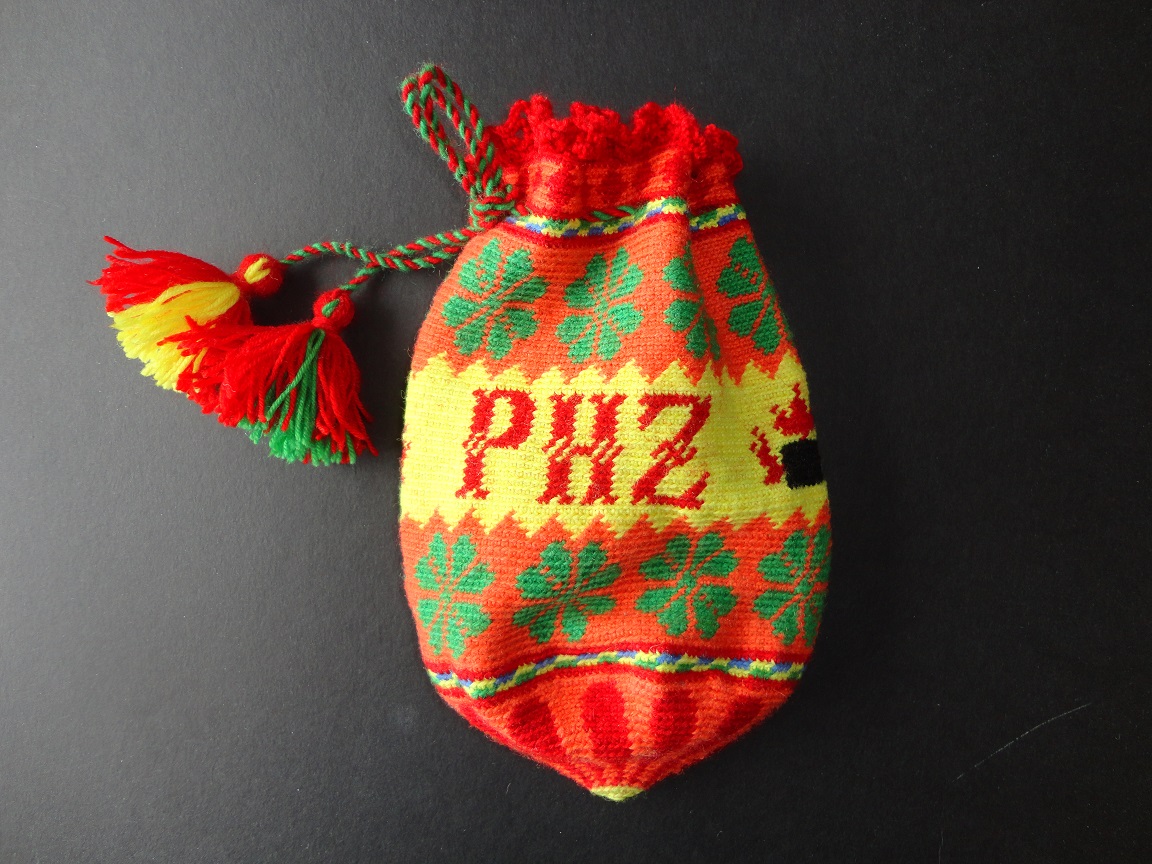
A suitor pouch was made by a girl who wanted to give her suitor a beautiful gift. The pouch could be knitted, crocheted or sewn. There is no exact pattern. In this case I've crocheted the pouch myself on a 1.5 mm hook, to get fine stitches but still a reasonably soft material. My pattern is based on a suitor pouch from the neighbouring town Kronoby, with added strips such as in the Kokkola suspenders. This pouch has the traditional flower pattern in the bottom. My mom suggested that I should decorate the pouch with the coat of arms of Kokkola, a burning tar barrel. I've added lining in unbleached linen. A pouch like this probably signalled that you had some money and were settled.
Worn in the vest pockets. Probably a slight marking of status.
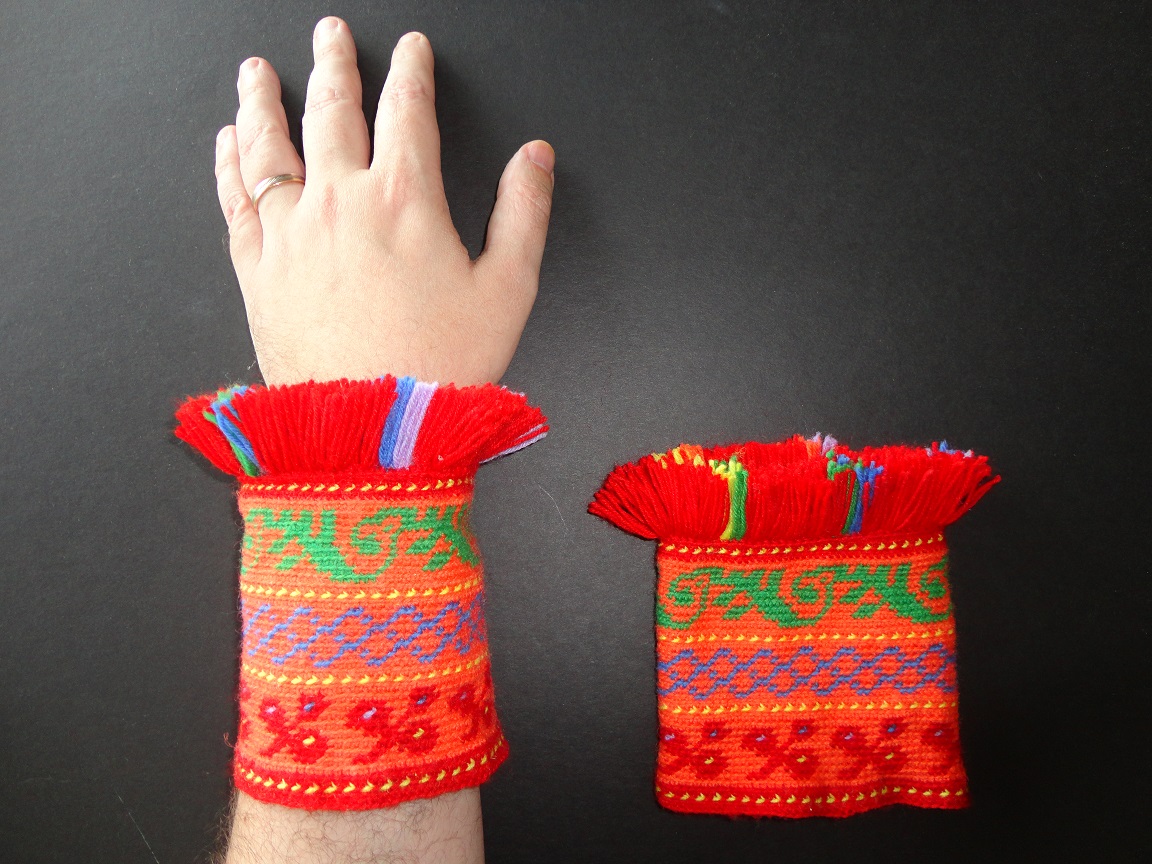
These are richly decorated in strong colours (red, orange, yellow, green, blue and purple), with a red fringe. I used a 2 mm hook, so that the wrist warmers would be a bit softer. Korsnäs is located a bit away from Kokkola, but still in Ostrobothnia, so I think they fit well enough.
In olden days, eyeglasses were often round. Riding bow temples that curve around the ear were introduced in the Scandinavian countries around the 1860's, so that should be a suitable choice. I found frames in white metal with a suitably round shape.
Have I forgotten something, or does something sound incorrect? Please let me know!